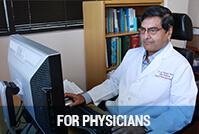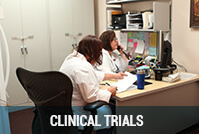Sleepy, Tired, Fatigued? You May Have Idiopathic Hypersomnia

Are you tired, sleepy, fatigued? You may have Idiopathic Hypersomnia. Sleep medicine doctors often ignore idiopathic hypersomnia. Many sleep medicine doctors focus exclusively on sleep apnea. Others understand and look for narcolepsy with cataplexy (now called narcolepsy type 1). Narcolepsy with cataplexy is a rare disorder. In my experience, narcolepsy without cataplexy (now called narcolepsy type 2) is more common that narcolepsy with cataplexy. Other sleep medicine doctors across the country are coming around to that view.
Idiopathic hypersomnia is even more common that narcolepsy without cataplexy. Many sleep medicine experts used to think idiopathic hypersomnia was extremely rare. Now they are beginning to reconsider.
With many sleep medicine experts thinking idiopathic hypersomnia is extremely rare, pharmaceutical companies were not interested in it. So, there is no FDA approved medicine for idiopathic hypersomnia. Now, pharmaceutical companies are getting interested in idiopathic hypersomnia. They are realizing it may not be as rare as experts thought.
This year the premier annual sleep medicine conference took place in Baltimore (Sleep 2018). There were a couple sessions on hypersomnia. Dr. David Plante and Dr. Lynn Marie Trotti were definitely talking about idiopathic hypersomnia. I was pleasantly surprised to see many slides presented from my scientific papers published a long time ago. It is good to see the sleep medicine community is finally beginning to recognize idiopathic hypersomnia.
What is idiopathic hypersomnia? Idiopathic means a disease with an unknown cause. Therefore, idiopathic hypersomnia is sleepiness of unknown cause. In fact, many chronic diseases are idiopathic. Hypertension or high blood pressure is usually idiopathic. Although we understand some of the mechanisms of diabetes, we do not really know what causes diabetes. Narcolepsy without cataplexy is also idiopathic. Idiopathic disorders often have many different causes and may be a basket of different disorders. It seems to be more common in women.
How do we diagnose idiopathic hypersomnia?
We diagnose idiopathic hypersomnia when there is chronic sleepiness, in a patient without sleep apnea or narcolepsy, who gets enough time in bed. The sleepiness usually begins early in life (teenage years or early adulthood). The patient does not have other disorders that commonly cause sleepiness (such as significant depression) or these disorders clearly began much after the sleepiness. The patient is not taking medicines that commonly cause sleepiness (or remains sleepy off these medicines).
We do a polysomnography (sleep study) which shows relatively normal sleep without significant sleep apnea. We then do a multiple sleep latency test. We ask patients to lie down and fall asleep in a dark room for 20 minutes or so, 4-5 times during the day. Patients often (but not always) fall asleep within 8 minutes on an average, and do not go into REM (dream) sleep during the naps. If they do, they may have narcolepsy. The testing must be done off medicines that cause sleepiness or suppress REM sleep. Unlike narcolepsy patients, patients with idiopathic hypersomnia do not necessarily fall asleep quickly when given the opportunity to do so. Although these patients may be able to force themselves to stay awake, they feel sleepy during the day, and they may sleep more than other people do.
We do not understand the mechanisms underlying idiopathic hypersomnia. An imbalance in any of the brain chemicals that are responsible for sleep and wake may be responsible.
Stimulant medicines (such as methylphenidate and modafinil, which increase available dopamine and norepinephrine in the brain) are helpful. There is some evidence that medicines that decrease GABA in the brain may also be helpful.
We are exploring clinical trials on new medicines for idiopathic hypersomnia. If you are interested, please contact us.









